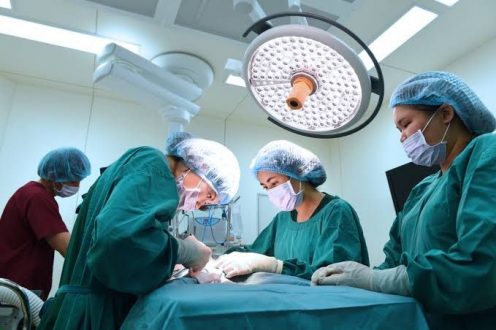Choledochoduodenostomy is a quick, safe, and easy procedure for treating complex calculous illnesses of the common bile duct. It is especially beneficial for high-risk, elderly, or handicapped patients. In this procedure, the anastomosis of the bile duct is commonly performed side-to-side. Through this, a surgical connection is made between the duodenum and the CBD (Common Bile Duct).
Choledochoduodenostomy is a straightforward procedure that drains the midextrahepatic bile duct for benign disorders like recurrent choledocholithiasis or distal bile duct stricture. Choledochoduodenostomy is used to treat patients who have retained, recurrent, or impacted bile duct stones, bile duct strictures, stenosis of the sphincter of Oddi, choledochal cysts, biliary obstruction, and bile duct fistulas.
Choledochoduodenostomy Procedure
The patient is given general anesthesia before the surgery. The decision for the anesthesia is made by taking into account the patient’s age, liver function tests, and overall health. The patient is positioned flat on the table, with his or her feet lower than his or her head. The patient is slightly rotated to the surgeon’s side for better exposure.
The necessary preoperative preparation is done for effective surgery. Before performing the surgery, the skin is prepared for it from the chest to the abdomen. An incision is made in the right subcostal area or the upper middle of the body. After the incision, the surgeon carefully releases the adhesions to the peritoneum, particularly those that hinder the liver from mobilizing and exposing the common duct.
The complete exploration of the abdomen is done by the surgeon including the size of the common duct, acute inflammatory engagement of the first portion of the duodenum, as well as any evidence of ulcer deformities. A liver biopsy is considered, as well as a needle extraction of a common bile duct for culture is taken to guide antibiotic therapy.
The duct’s diameter is determined and should be between 2 – 2.5centimeters. Then the surgeons examine both the common and cystic ducts for possible calculi. Duodenum and pancreas head are mobilized by cutting the peritoneum from the Winslow foramen to the third section. After this, the entire duodenum is inspected and is freed up by the hand positioned under the pancreas’s head.
Choledochoduodenostomy Steps
The following steps are taken during this surgical procedure:
- The incisions are placed in the duodenum as well as in the common bile duct. It is 2cm long for the common bile duct.
- The surgeon then sews the wound by inserting sutures at the posterior anastomotic wall.
- The sutures are inserted on both sides i.e. from the hepatic side to the anal side and the other from the duodenal side to the oral side.
- In the same manner, the sutures are placed at the anterior anastomotic wall.
- In the end, the loops of the sutures are tightened and completed with at least eight knots.
Choledochoduodenostomy Indications
Nowadays medical professionals prefer choledochoduodenostomy over the transduodenal approach for treating the benign strictures of the bile duct or bile duct stones.
The diseases like recurrent pancreatitis, nondilated common duct, a common bile duct stone susceptible to endoscopic excision, or sclerosing cholangitis are not treated with choledochoduodenostomy. In accurately selected patients, choledochoduodenostomy may be significantly safer, with better long-term benefits, than more difficult diverticulectomy treatments.
Choledochoduodenostomy Complications
The following complications can be caused by choledochoduodenostomy:
- In patients who have had a side-to-side choledochoduodenostomy, biliary sump syndrome is a rare long-term consequence.
- A rise of pressure in the bile duct causes the intercellular spaces to enlarge, exposing the cells to bacteria found in the bile. This leads to the inflammation of the bile duct or cholangitis.
- The other rare long-term complication caused by choledochoduodenostomy is alkaline gastritis. It is mostly caused by the gastric remnant or excessive alkaline duodenal content refluxing into the stomach after pyloric sphincter surgery.
- Cholangiocarcinoma is also more likely to develop in persons who have cholangitis.
- Soreness and jaundice are also caused due to choledochoduodenostomy.
- The one short-term complication that can appear as a result of this surgical procedure is the leakage of the bile.
 Health & Care Information
Health & Care Information



